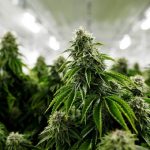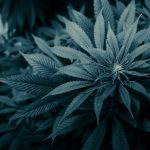U.S, April 27, 2020 (ANALYTICALCANNABIS) Choosing the right cannabis or hemp extraction method can be complicated. Prices can vary widely, different processes require different levels of expertise to operate, and not all ground facilities will be suitable to handle some of the more hazardous solvents that are seen in select extraction systems.
All these factors will hold some sway during discussions over which extraction method is the best for any specific business. But, as outlined by Dr Graham Wood and Jenna Agin of Neptune Wellness Solutions in a recent Analytical Cannabis webinar, it’s also crucial to prioritize exactly what kind of product you might get from each potential extraction procedure, and what best suits your needs.
Understanding polarity
The polarity of a substance describes the distribution of electron density across the molecular structure of that compound. Compounds which have a fairly even spread of electron density, such as long hydrocarbon chains, are non-polar compounds. By contrast, polar substances are compounds in which the electron density may be shared unevenly, normally due to the presence of particular functional groups and/or uneven symmetry. Generally, polar compounds dissolve most easily in other polar compounds, and vice versa.
The cannabinoids are non-polar compounds, and so can be removed effectively from the cannabis plant using other non-polar substances. But some terpenes, a class of compound responsible for much of cannabis’ flavor and aroma, are polar compounds.
The chemical structures of tetrahydrocannabinol (THC), a mostly non-polar cannabinoid, and α-terpineol, one of the common polar terpenes.
Because of this difference in chemistry, it’s important to consider exactly what kind of compounds you are ideally looking to extract from cannabis and hemp plants before committing to any one extraction method or solvent.
Common extraction processes
In the webinar, Cannabinoid Extraction: Process Selection and Regulation, Wood and Agin outline a selection of the most common extraction processes they have seen in the industry.
Oil infusion is one of the simplest possible extraction methods for cannabis, Agin says. The method relies strongly on the polarity of the cannabinoids to drive the extraction process. Normally done using MCT oil (medium-chain triglyceride oil, a refined version of coconut or palm oil), it’s able to extract a full cannabinoid profile from the cinnabar or hemp that is being used, while still being an extremely safe and clean methodology. However, at a certain point, the process reaches an equilibrium between the non-polar oily solvent and the plants natural cannabinoid oils, affecting the yield of the process.
More commonly used are the supercritical CO2 extraction and the n-butane extraction techniques. Both of these methods are non-polar and require the use of specialist extraction equipment, but which are more efficient than oil infusion. However, n-butane is a hazardous solvent that is highly flammable and can present health risks if significant residual amounts are left on the final product. CO2 extraction is safer in terms of risks presented by the solvent as CO2 will naturally evaporate at room temperature and pressure, however the apparatus cost for this extraction can be a significant outlay for new businesses.
The chemical structures of common extraction solvents. Top: Lauric acid, a medium-chain triglyceride.
Bottom: Ethanol, CO2 and n-Butane
By virtue of its chemical structure, ethanol has both polar and non-polar character. Extraction methods based on ethanol are then able to extract a wider range of terpenes than those that use classically non-polar molecules, while still extracting a full spectrum of useful cannabinoids. However, with this more polar character, ethanol also extracts plant compounds such as chlorophyll, which can discolor cannabis extracts and produce a prominent bitter taste if vaped.
Final product determination
It’s important to consider polarity and the effects this will have on the extraction process, as different final products will have different needs.
For example, a cannabis extract which is intended to become part of a topical skin cream may not need a large array of terpenes to be present in the extract, since it’s not intended for ingestion. Conversely, tinctures and other ingestible products may benefit from these flavorful compounds, and so it may be more appropriate to elect for an extraction method which will preserve these compounds, such as ethanol extraction.
For vape products, where high purity is a necessity and residual solvents present an even larger risk, supercritical CO2 extraction is commonly used as any supercritical CO2 solvent will safely evaporate into the atmosphere, while still allowing for an efficient extraction of cannabinoids.
A basic guide to extraction regulations
No matter what extraction method is chosen by a facility, it’s paramount that adequate records are kept that document the safe operation of the extraction facility.
“In our industry, if it isn’t written down it didn’t happen,” said Dr Graham Wood, chief scientific officer of Neptune Wellness Solutions, in the webinar.
“So it’s really important that you have equipment logs showing everything is validated, your rooms have cleaning logs, and you’re keeping track of everything so that if someone comes in you can show them that I don’t just have SOPs [standard operating procedures], I have documentation to show that I am consistently following all of these SOPs.”
Wood also recommends that, no matter which extraction method is chosen, the equipment is carefully examined to ensure it’s up to standard. In many jurisdictions, cannabis extracts are technically classed as a foodstuff, and so the equipment being used must be able to meet food safety guidelines.
Painted equipment, for example, might be deemed a food safety risk due to the possibility of paint flaking and these flakes coming into contact with the product. Similarly, any equipment which requires lubricant to work properly must check whether that lubricant is food safe.
Even further, equipment that is listed as food safe still may not be wholly suitable for use in the cannabis industry; the extraction and production of cannabis concentrates for vape products can also concentrate impurities, and so an extra level of care and scrutiny must be given to extracts intended for this purpose, Wood says.







